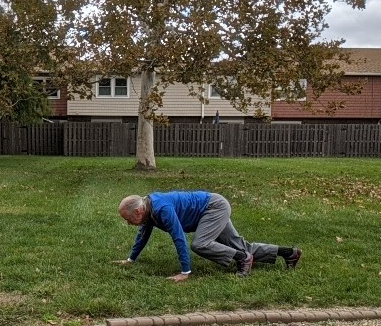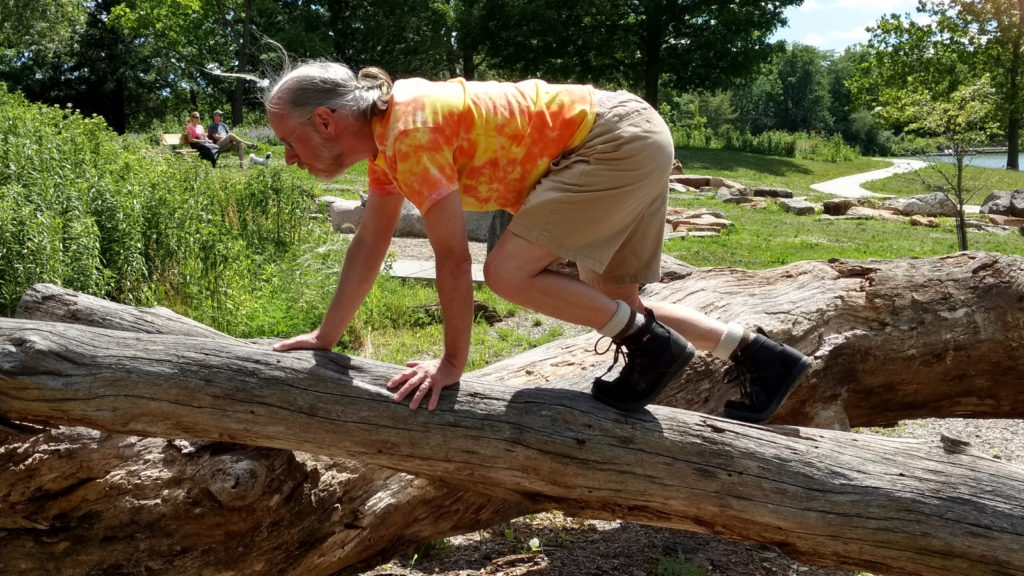
I did an experiment a couple of days ago: I tested a combined workout that doubled up two pairs of exercises that I’d been doing separately. Up to now I’ve been doing four sessions each week: two where I do pull ups & pushups, and then two where I do dips & inverted rows. (Together with a leg exercise and a core exercise each workout.)
That was working very well, but it meant 4 upper-body strength sessions each week, which is a lot. Throw in a couple of lower-body strength sessions as well (such as hill sprints or kettlebell swings), plus a rest day, and I didn’t have a day to do anything else. This sort of volume has been well for me so far, but I think I may have reached a limit, and would benefit from a cycle of deeper recovery than just a week of lighter workouts: Except for “de-load” weeks in mid-March and mid-June, I’ve been averaging close to 5 workouts a week since the end of January. I’m thinking I want to take it down a notch.
With that in mind, I’ve been thinking about how I want to structure my training through the fall and winter. One obvious change was to go from four days of upper-body strength training per week to just three. The problem was that I didn’t see an easy way to evenly cover the range of pushing and pulling exercises at a reasonable volume with just three workouts a week, except by doing both pairs in each workout.
Hence my experiment, in which I did just that.
It was not a complete success. I managed to crank my way through the workout, but it was very long and tough. I don’t think I could keep it up three times a week for months.
Happily, while describing my difficulties to my friend Chuck, I had a brainstorm: I could do threes workouts per week—two of them just like what I’ve been doing (one with pull-ups & push-ups, and then another with inverted rows & dips), and then do just one combined workout. That keeps my workouts even, as far as covering all four exercises twice each week, without being quite so overwhelming as trying to do the combined workout three times a week.
With just three upper-body strength workouts per week, I have four days for other stuff, and I can mix and match as I choose. I can do the hill sprints that Anthony Arvanitakis recommends, or I can do kettlebell swings. (Either of those makes a good HIIT workout.) I can go for a run. I can go for a hike. I can do my animal moves. In particular, I can do two rest days, if that seems like a good idea. (Which I think it probably does. At least my Oura ring thinks so.)
This all got started back in February, when I figured out that I was lacking in consistency. (Previously I’d imagined that the problem was a lack of intensity.) Targeting 5 workouts a week has meant that, even when I miss one, I get in more than when I was targeting 3 workouts a week—even if I didn‘t miss one.
I don’t want to give up the consistency, I just want to take the volume down a notch. Hence the struggle. But I think now I’ve got a plan.


